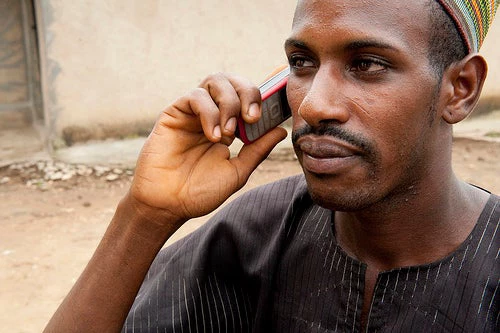Nearly 13 million people die annually because they are unable to access essential, lifesaving medicines for curable diseases, according to estimates from The World Health Organization (WHO). A daunting number, but one we’re beginning to reduce, thanks in part to the rise of mobile apps and other information communications technologies that have the potential to greatly improve access to medicines.
To look at the impact of ICTs in this area, the World Bank Institute recently hosted a three-week, online conversation among three leading innovators: Mandy Sugrue of mHealth Alliance, Dr. Shelley Batra of Operation Asha, and Dr John Munyu of KEMSA.
During the conversation, Sugrue explained the approach of a public-private partnership, mPowering Frontline Healthworkers, an initiative designed to improve child health by accelerating the use of mobile technology by millions of health workers in low-resource and rural communities. This program was effective in large part due to a design process which emphasized assessing the need of the user and community and constantly keeping the user in mind when creating the platform.
“There is always a new shiny tech platform, app, device, etc. to laud. But without thinking through how a user or community will adapt it into their daily lives, it won’t make a meaningful difference in people's lives,” she noted.
Another initiative -- Operation Asha -- tackles the issue of tuberculosis (TB) treatment, which is long and tedious, requiring a patient to visit a center 60 times over 6 months. To ensure access to medicines and the compliance necessary to prevent drug resistant TB, the group developed a biometric initiative called eCompliance.
“Technology, added to community empowerment, has shown outstanding results,“ said Dr. Batra. “Patients’ finger prints are taken whenever home visits are done. … The system has reduced missed doses, prevented data manipulation, digitized attendance records, ensured multi-level accountability and transparency, and remarkably improved the psyche of patients and health workers.”
In Kenya, KEMSA has designed an e-Mobile platform to allow stakeholders to access vital information on medicine stocks and delivery schedules, and to help enhance efficiency, transparency and accountability. KEMSA also seeks to reduce the challenge of counterfeit medical supplies, estimated at 40% of all supplies, including medicines.
In addition to helping health workers and administrators, the system helps Kenyan citizens access information on drug stocks at their local facility, and reports integrity issues through an “m-Integrity” application, Dr. Munyu noted. “The convenience of this system limits the amount of time typically spent in traveling to various pharmacies or public dispensaries to find specific medications,” he said.
At the close of the conversation, Sugrue emphasized that solutions facilitating access to medicines must be created and shared to incorporate user feedback and engagement, or they won't be adapted or used on a larger scale.
“The global health community can no longer continue to work in a silo. We must incorporate and consider the multiple components that make up the health care community from funders, to tech experts, to content creators, policymakers, community health workers, and patients,” she said.
Highlights from those participating in the conversation included the following:
Context
“Too often technology fails because #ICT4D app/software has been developed in a fancy lab and dumped on the disadvantaged.”
“Providing community healthcare workers the basic tools to better engage with patients is a huge first step to reaching these hard to reach regions.”
“Tech empowers community health workers in more ways than one. It adds to their respect in the community, prevents errors and Drug Resistant TB.”
“Another type of example of how to give individuals more control with their health information is the work of the Mobile Alliance for Maternal Action also known as MAMA (http://mobilemamaalliance.org/)”
Access and obstacles
“It is easy to establish a health solution. It is well-nigh impossible to deliver it to the target population!”
“We realized that the biggest obstacle is not the availability of vaccines or health care workers, it is the overwhelming amount of amount of paperwork associated with record keeping of vaccination.”
Scaling
“How do we scale the amazing array of solutions that already exist?”
“Over 40 small scale e/mhealth pilots in Uganda! How do we move from pilot to scale, and sustain this effort?”
"Initiatives like Stop Stockouts Campaign create excitement and expectation, but after a few pilots fizzle. Why?”
“For KEMSA, moving from pilot to country roll-out was not without challenges. Building partnerships and public awareness were key to scaling. KEMSA and its partners took to print media, electronic media and new age media to create awareness. Moreover, end user training was also carried out across the country at facilities to empower and encourage the user to use this new innovation.”
Visit Striking Poverty to view more of the conversation in detail.
Follow the World Bank Health team @worldbankhealth



Join the Conversation